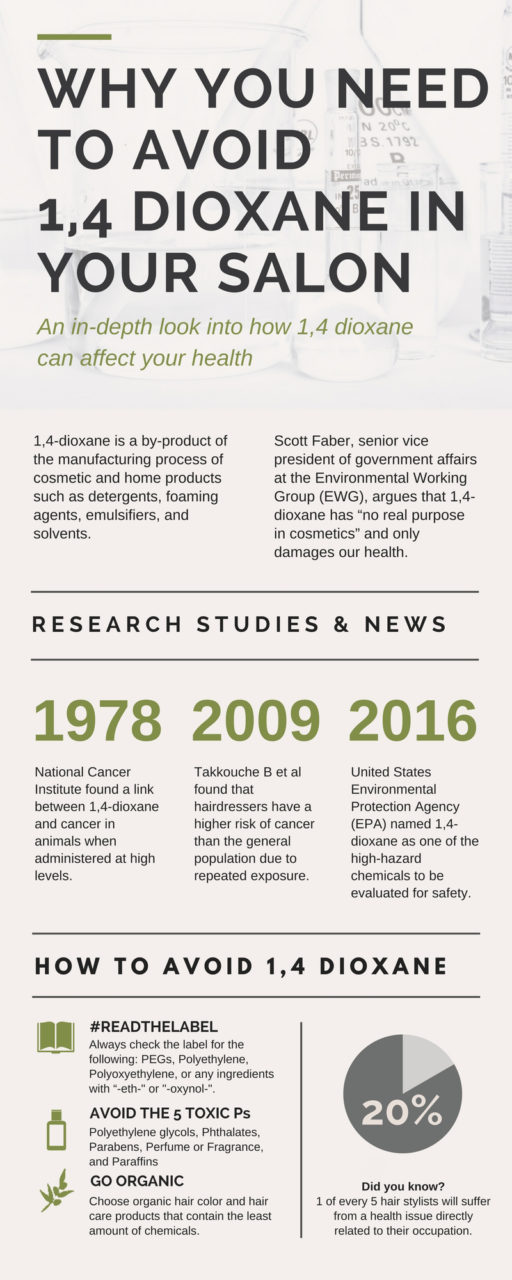Last month, New York senators Charles Schumer and Kirsten Gillibrand petitioned the Food and Drug Administration (FDA) to ban the chemical 1,4-dioxane from personal care products due to its potentially cancerous effect, according to The Hill.1
This came on the heels of a report by the United States Environmental Protection Agency (EPA) naming 1,4-dioxane as one of the high-hazard chemicals to be evaluated for safety in November last year.2 The Environmental Working Group lists about 8,000 personal care products containing this chemical, but what makes it dangerous to our health?
What is 1,4-dioxane?
1,4-dioxane is a by-product of the manufacturing process of cosmetic and home products such as detergents, foaming agents, emulsifiers, and solvents. The Food and Drug Administration (FDA) has stated that for the most part, the types of products in which 1,4-dioxane is found are only in contact with the skin for a short time as it readily evaporates upon application. 3

Scott Faber, senior vice president of government affairs at the Environmental Working Group (EWG), argues that 1,4-dioxane has “no real purpose in cosmetics” and only damages our health. So this begs the question: why is this ingredient still present in everyday products?
Unfortunately, there’s a serious lack of cosmetics regulation in the U.S. Because 1,4-dioxane is only a by-product, companies are not required to list it as ingredient, allowing them to just hide it behind the blanket term “FRAGRANCE”.
How dangerous is 1,4-dioxane?
Back in the 70s, a National Cancer Institute study found a link between 1,4-dioxane and cancer in animals when administered at high levels.
Although cosmetics contain far lower concentrations of this chemical, constant exposure to carcinogens over prolonged periods provides a greater chance of contracting cancers. 4
Countless hair dyes contain cancer-causing agents such as ammonia, formaldehyde, and PEGs or Polyethylene glycol (an ingredient containing 1,4 dioxane). This puts hairdressers among the top 3 occupations – just behind rubber manufacturing and agriculture – at a higher risk of this deadly disease, which affects the following:
- Lungs
- Breasts
- Bladder
- Larynx
Ingredients such as PEGs also enhanced product absorption, which can cause more damage if 1,4 dioxane is present. This is why we recommend avoiding PEGs in hair color.
How do we identify 1,4 dioxane?
1,4-dioxane can be easily identified by looking for the following prefix, word, or syllables in the labels5: PEGs, Polyethylene, Polyoxyethylene, or any ingredients with “-eth-” or “-oxynol-“.
How can we avoid this carcinogen?
Here are the steps you can take to protect yourself against accidentally using 1,4-dioxane in your salon:
- Always read the label.
- Avoid the 5 Toxic Ps: Polyethylene glycols, Phthalates, Parabens, Perfume or Fragrance, and Paraffins.
- Choose organic hair color and hair care products that contain the least amount of chemicals.

It should be noted that there’s no data yet describing the effects of 1,4-dioxane in humans, but is it really worth the risk? If a potentially dangerous chemical does not serve any purpose at all, why do we still need to use it? It’s better to be safe than sorry, don’t you think?
Sources:
1 The Hill. (2017). Dems petition FDA to ban potentially toxic chemical from shampoos, body wash. Available: http://thehill.com/regulation/pending-regs/328720-ny-dems-petition-fda-to-ban-toxic-chemical-from-shampoos-body-wash
2 United States Environmental Protection Agency. (2016). EPA Names First Chemicals for Review Under New TSCA Legislation. Available: https://www.epa.gov/newsreleases/epa-names-first-chemicals-review-under-new-tsca-legislation
3,5 United States Food & Drug Administration. 1,4-Dioxane A Manufacturing Byproduct. Available: https://www.fda.gov/cosmetics/productsingredients/potentialcontaminants/ucm101566.htm
4 Takkouche B et al. (2009). Risk of cancer among hairdressers and related workers: a meta-analysis. Available: https://www.ncbi.nlm.nih.gov/pubmed/19755396




